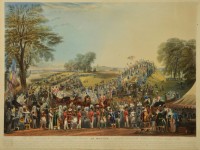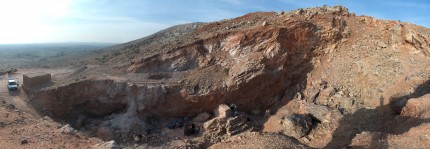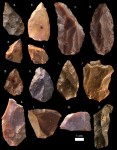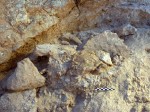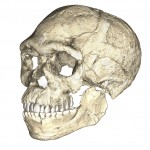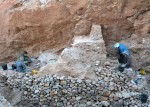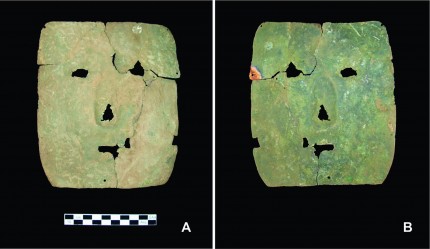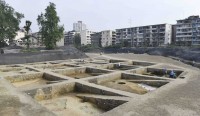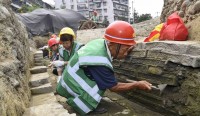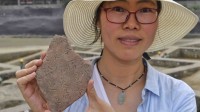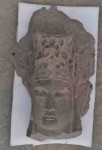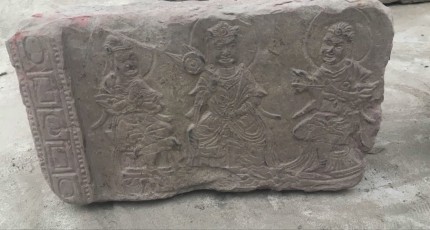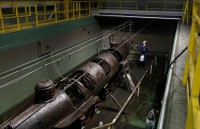 Conservators at Clemson University’s Warren Lasch Conservation Center spent years removing the thick concretion layer coating the exterior of the Confederate submarine H.L. Hunley using a weak solution of of sodium hydroxide to soften the rock-hard mixture of sand, rust, marine shells and sediment. Sixteen years after it was raised from Charleston Harbor, the exterior of the iron submarine was finally liberated from its concretion prison, its original skin revealed, and the conservation team moved on to the interior.
Conservators at Clemson University’s Warren Lasch Conservation Center spent years removing the thick concretion layer coating the exterior of the Confederate submarine H.L. Hunley using a weak solution of of sodium hydroxide to soften the rock-hard mixture of sand, rust, marine shells and sediment. Sixteen years after it was raised from Charleston Harbor, the exterior of the iron submarine was finally liberated from its concretion prison, its original skin revealed, and the conservation team moved on to the interior.
They’ve made a great deal of progress there too. The crank shaft used to power the submarine is now clean. Researchers found textile fragments and loose metal sleeves at several of the positions where crew members turned the crank by hand to keep the vessel moving and keep themselves alive. The team believes the cloth and sleeves were protective bindings that helped provent blisters and chafing.
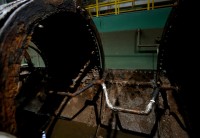 While cleaning the crank shaft, conservators made an unexpected find: a human tooth embedded in the the concretion at crank handle position Number 3. According to lead archaeologist Michael Scafuri, the tooth was lost after death. It fell out of the jaw when the body decayed and became stuck to the corroding iron of the crank handle. Thus human remains became part of the rich tapestry of assorted debris that made up the concretion layer.
While cleaning the crank shaft, conservators made an unexpected find: a human tooth embedded in the the concretion at crank handle position Number 3. According to lead archaeologist Michael Scafuri, the tooth was lost after death. It fell out of the jaw when the body decayed and became stuck to the corroding iron of the crank handle. Thus human remains became part of the rich tapestry of assorted debris that made up the concretion layer.
Historical research indicates that Frank Collins sat at position Number 3. The teeth that were found with his remains showed that unlike most of his comrades, he was a non-smoker as he had no pipe notches. He did have “tailor notches,” indentations left by repeated use of metal needles like tailors would have used. Census information only refers to him as a “day labourer” before the war, and there’s very little in the documentary record about what kind of jobs he held, but was classified as a seaman when he enlisted in the Confederate Navy, he probably worked at sea at some point before then.
 Collins was more than six feet tall and the crew compartment of the Hunley is less than four feet in diameter, so he must have folded himself up like origami to fit inside that tiny iron cigar. It’s a testament to his bravery that he volunteered for the position which was the most dangerous in the submarine because it was in the middle, the farthest away from both the forward and aft escape hatches. His height would have made scrambling out of there even more difficult for him than for a smaller man.
Collins was more than six feet tall and the crew compartment of the Hunley is less than four feet in diameter, so he must have folded himself up like origami to fit inside that tiny iron cigar. It’s a testament to his bravery that he volunteered for the position which was the most dangerous in the submarine because it was in the middle, the farthest away from both the forward and aft escape hatches. His height would have made scrambling out of there even more difficult for him than for a smaller man.
The remains of Frank Collins and the other seven crewmen who operated that handcranked death trap of a submarine and delivered the first successful sub-to-ship torpedo at the cost of their lives were buried at Charleston’s Magnolia Cemetery on April 17th, 2004, next to the bodies of the 13 men who had died on the Hunley‘s early test missions. We don’t know yet what will happen to the tooth, but it seems unlikely that the grave will be opened just so the one tooth can be added.
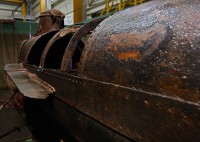 Conservation continues at a deliberate, painstaking pace. There is no deadline; it’ll be done when it’s done. The submarine is almost free of concretions now, with only a few patches remaining on the upper level of the interior. So far the cleaning process has not added any new information to explain how and why the Hunley sank.
Conservation continues at a deliberate, painstaking pace. There is no deadline; it’ll be done when it’s done. The submarine is almost free of concretions now, with only a few patches remaining on the upper level of the interior. So far the cleaning process has not added any new information to explain how and why the Hunley sank.
“To be honest and upfront about it, we will always have an element of uncertainty because until we invent a time machine we’re never going to know exactly what happened,” Scafuri said.
It could be a series of complicated events, ranging from human error to “something obvious” or something not considered yet, he said.
“Everything is on the table within reason,” Scafuri said.
